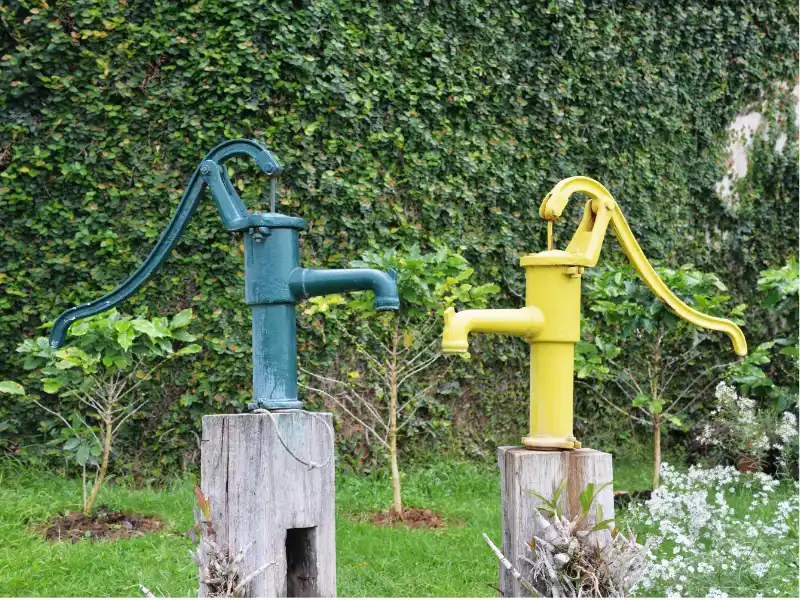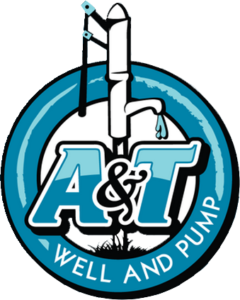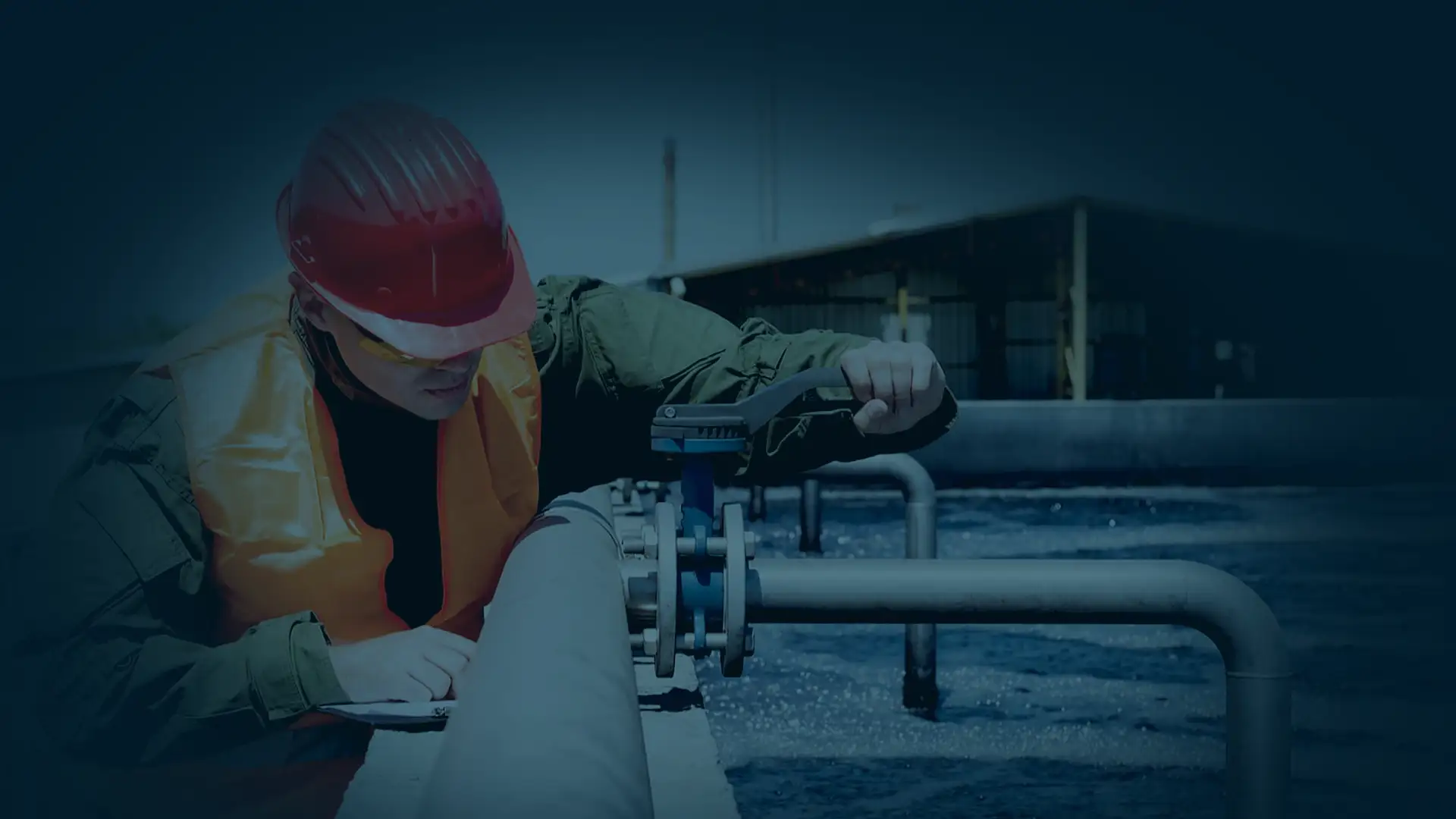Our team specializes in comprehensive well maintenance services. With our expertise and attention to detail,…
Access to clean and reliable water is fundamental to human health, agriculture, and countless other aspects of daily life. For many individuals and communities, especially those in rural areas, water wells provide a vital source of this essential resource. However, successful water well installation requires careful planning, adherence to regulations, and the implementation of best practices to ensure long-term reliability and safety.
Depending on the size of the hole drilled for well installation as well as the depth and type of well pump system needed, tapping into a water aquifer can cause a variety of issues. Sometimes even an experienced well pump contractor can run into difficulty with well installation, which is why our professional well pump contractors are sharing the essentials for successful water well installation.
Whether you're considering installing a well on your property or simply want to understand more about this crucial aspect of water resource management, this guide will provide valuable insights and practical tips.
Understanding Water Well Systems
Water wells serve as a primary source of freshwater for millions of people around the world, particularly in rural and remote areas where access to municipal water supplies may be limited or non-existent. A water well is essentially a structure drilled, dug, or constructed into the ground to access groundwater stored beneath the Earth's surface.
Understanding the components and operation of a water well system is essential for ensuring proper well installation, functionality, and maintenance.
Components of a Water Well
A water well consists of several key components, each playing a crucial role in the extraction and delivery of groundwater.
These components typically include:
- Casing: The outermost layer of the well, usually made of metal or PVC, which prevents the collapse of the borehole and keeps contaminants from entering the well.
- Screen: Positioned within the casing, the screen allows water to flow into the well while filtering out sediment and debris.
- Pump: The device responsible for lifting water from the well and delivering it to the surface for distribution.
- Wellhead: The topmost part of the well, equipped with fittings for connecting pipes, electrical wiring, and other equipment.
Types of Water Wells
Water wells can be categorized based on the method used to construct them and the geological formations they penetrate.
Common types of water wells include:
- Drilled Wells: Created using drilling equipment to bore through rock or soil layers to reach groundwater reservoirs.
- Dug Wells: Excavated manually or with machinery to access shallow groundwater aquifers.
- Driven Wells: Installed by driving a casing or pipe into the ground using a heavy hammer or mechanical driver.
Factors Influencing Well Installation
Several factors must be considered when planning and installing a water well to ensure optimal performance and longevity.
These factors include:
- Location: The geographical and geological characteristics of the site, such as soil composition, rock formations, and groundwater depth.
- Water Table: The level at which groundwater is found beneath the surface, which can vary depending on seasonal fluctuations and local hydrology.
- Regulatory Requirements: Permits, zoning regulations, and environmental guidelines that govern well installation practices to protect water quality and natural resources.
- Hydrogeological Conditions: Understanding the movement and quality of groundwater in the subsurface, including potential sources of contamination and recharge areas.
Preparation for Well Installation
Before embarking on the installation of a water well, thorough pre-installation preparation is essential to ensure a successful and efficient process. From site selection to regulatory compliance, several crucial steps must be taken to lay the groundwork for a reliable and sustainable water supply system.
Well Installation Site Selection and Assessment
Selecting the optimal location for a water well is a critical first step in the pre-installation process.
Factors to consider include:
- Groundwater Availability: Conducting hydrogeological surveys and consulting groundwater maps to identify areas with ample water resources.
- Accessibility: Ensuring that the chosen site is easily accessible for drilling equipment and maintenance purposes.
- Distance from Contaminants: Avoiding locations near potential sources of water contamination, such as septic tanks, livestock facilities, or industrial sites.
- Future Land Use: Considering potential changes in land use and development that may impact the well's performance and water quality over time.
Permits and Regulations
Obtaining the necessary permits and adhering to regulatory requirements are essential aspects of well installation.
This typically involves:
- Researching Local Regulations: Familiarizing oneself with local, state, and federal regulations governing well construction, setback requirements, and water rights.
- Securing Permits: Applying for permits from relevant authorities, such as environmental agencies, health departments, or water management districts.
- Environmental Impact Assessment: Conducting assessments to evaluate the potential environmental impact of well installation and obtaining any required approvals or mitigations.

Steps in Water Well Installation
Installing a water well involves a series of carefully orchestrated steps to ensure the successful extraction of groundwater while minimizing environmental impact and adhering to regulatory requirements. From initial surveying to final testing, each phase of the well installation process plays a crucial role in establishing a reliable and sustainable water supply system.
Step 1: Survey and Planning
Before initiating the physical work of installing a water well, thorough surveying and planning are crucial. This step involves assessing various factors, such as geological conditions, hydrological characteristics, and regulatory requirements. Geological surveys help identify suitable locations for drilling or excavation, considering factors like soil composition, topography, and proximity to potential contamination sources.
Step 2: Trenching
Trenching may be necessary for laying pipes or conduits from the well to the distribution system or providing access to the wellhead. It involves digging long, narrow excavations in the ground using specialized equipment. Trenches are typically dug to accommodate utility lines, electrical wiring, or other ancillary infrastructure associated with the water well system.
Step 3: Excavation
Excavation is a critical step in the water well installation process, especially for shallow wells or those located in unconsolidated formations. Excavation involves digging a hole manually or with machinery to access groundwater aquifers. The size and depth of the excavation depend on factors such as the desired well depth, soil composition, and hydrogeological conditions. Care must be taken to prevent cave-ins, stabilize the excavation, and protect workers' safety during the digging process.
Step 4: Drilling the Aquifer
Drilling is the primary method used to penetrate rock formations and reach groundwater reservoirs in deeper wells. It involves using specialized drilling equipment, such as rotary or percussion drills, to bore through rock or soil layers.
Drilling a well is not an easy task. A large truck with a drilling mechanism is required to excavate the dirt and rocks, while preventing contamination of the subsurface water. Make sure you have a professional, licensed, bonded, and insured well installation company to handle the process. By contacting a licensed well contractor, you can be sure they will comply with all governmental laws.
Step 5: Installing Casing and Screen
Casing and filter screen are installed inside the well bore to stabilize the well and prevent contamination. The casing, typically made of steel or PVC, is lowered into the wellbore to prevent collapse and protect the well from external contaminants. Perforated screen sections are attached to the bottom of the casing to allow groundwater to enter the well while filtering out sediment and debris. Proper installation of casing and filter screens is critical for maintaining the structural integrity of the well and ensuring the quality of the extracted water.
Step 6: Installing the Pump and Pressure Switch
Once the well bore has been drilled or excavated, the pump and pressure switch are installed to lift water from the well to the surface for distribution and to control the water pressure within the system. The pump is selected based on factors such as well depth, water demand, and operating conditions. It is installed inside the well casing and connected to the water distribution system.

Additionally, the pressure switch, which monitors the pressure in the water system, is installed near the pump. The pressure switch automatically activates the pump when the water pressure drops below a certain threshold and turns it off once the desired pressure is reached.
Step 7: Installing Water Tank
After the pump and pressure switch are installed, the water tank is connected to the system to provide storage and regulate water pressure. The water tank is typically placed above ground or buried underground, depending on space and site constraints. It is connected to the pump and distribution system through piping and fittings.
The water tank serves as a reservoir, storing water pumped from the well and supplying it to the distribution system as needed. It helps maintain a constant water pressure throughout the system, ensuring consistent flow rates and water availability. Proper installation and sizing of the water tank are essential for optimizing system performance and meeting the water demand of the users.
Step 8: Well Testing
After well installation is complete, the well undergoes testing to assess its performance and water quality. Well testing typically involves conducting pump tests to measure the well's yield, drawdown, and recovery rate. Water samples may also be collected and analyzed for various parameters, such as pH, turbidity, and chemical composition. Regular monitoring and testing are essential for ensuring the ongoing reliability and safety of the water well system.
Ensuring Water Quality and Safety
Maintaining the quality and safety of water from a well is essential for safeguarding public health and protecting the environment. Unlike municipal water supplies, which are subject to rigorous monitoring and treatment regulations, water from wells must be managed carefully to prevent contamination and ensure its purity. Here are some key steps to ensure water quality and safety from a well.
Water Testing and Treatment
Regular well water testing is crucial for detecting potential contaminants and ensuring compliance with health and safety standards.
This includes:
- Routine Testing: Conducting regular water quality tests for common contaminants such as bacteria, nitrates, arsenic, and other chemicals.
- Comprehensive Analysis: Periodically conducting more comprehensive water quality analyses to assess the overall health of the well and identify any emerging issues.
- Treatment Options: Installing appropriate water treatment systems, such as filtration, disinfection, or reverse osmosis, to remove or reduce contaminants based on water test results.
Maintenance and Monitoring
Ongoing maintenance and monitoring of the well and associated equipment are essential for preventing contamination and ensuring optimal performance.
This involves:
- Regular Inspections: Conducting visual inspections of the wellhead, casing, and pump to check for signs of damage, corrosion, or wear.
- Monitoring Water Levels: Periodically measuring water levels in the well to assess groundwater recharge rates and detect any changes in aquifer conditions.
- Pump Maintenance: Performing routine maintenance tasks, such as lubrication, cleaning, and adjustments, to ensure the pump operates efficiently and reliably.
Trust A&T Well and Pump for Expert Well Installation Services in Raleigh
Are you a Raleigh area homeowner in need of reliable and efficient well installation services? Look no further than A&T Well and Pump. With years of experience serving the local community, our team of water well installation experts is dedicated to delivering top-notch well installation solutions tailored to property. From initial surveying and planning to the final installation of pumps and pressure switches, we handle every aspect of the process with professionalism and precision.
Don't settle for anything less than the best when it comes to your water well needs. Contact A&T Well and Pump today and let us help you ensure a constant and clean water supply for your Raleigh area home.
Get started today by calling us at (919) 980-0981 or filling out our contact form below.
Request a Quote Form
We would love to hear from you! Please fill out this form and we will get back to you shortly.
"*" indicates required fields

